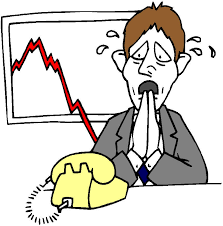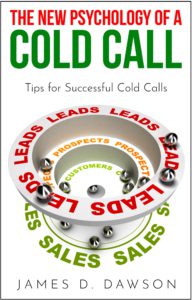Cold Calling Myths
There has been a lot of negative publicity surrounding cold calling. And it happened at a time when social selling was just positioning itself as a way to market digitally. While pundits reject the notion that cold calling is still an effective sales strategy, there are those who believe otherwise.
Unfortunately, there are only a few people who believe in the power of cold calling. But lucky for them, they’re the ones who understand the psychology of cold calling when everyone is misinformed about it. Let’s take a look at some of the myths associated with cold calling.
People Hate Cold Calling
This was true until the sales industry has drastically changed its approach towards cold calling. Before, cold calling was treated like a lottery numbers game. Companies gather leads and hand them over to telemarketers. In turn, telemarketers go about calling the numbers on the list in an automated manner. If someone answers, they deliver their opening spiel.
hand them over to telemarketers. In turn, telemarketers go about calling the numbers on the list in an automated manner. If someone answers, they deliver their opening spiel.
What made prospects hate cold calling all the more was the fact that these opening spiels were called ‘standard.’ And it didn’t help that a prospect gets more than one call in a day. These led prospects to automatically classify cold calls as undesirable.
Nowadays, businesses are smarter. They make sure that the leads they get are reliable and complete. This means that the leads are composed of people whose needs are aligned to the company’s offerings. The practice of randomly calling people who do not even have an idea about what the product being offered is now being eliminated.
In addition, sales persons now are aware that there is such a thing as warm calling. This is a personalized approach to calling prospects and actually involves the human element of sensitivity. Sales persons now are trained to be in tune with what prospects actually need and use that information to open up a sales conversation.
On top of that, cold calling now also includes reaching out to people who have volunteered their phone numbers for future sales opportunities. And then there’s that part where people actually call sales departments because they are interested in a particular product or service.
Cold Calls Have To Be Pushy
This was true until telemarketing companies have decided to make changes to their call flow. Before, telemarketers were made to follow a script. The script is embedded within the call flow. One thing that gives rise to the pushy characteristic of the call is insistence. If a prospect initially says ‘no,’ the telemarketer pushes on by ‘unwrapping’ another product benefit.
The New Psychology of a Cold Call: Tips for Successful Cold Calls
The problem with the technique is that it is repetitive and it is disengaging because it irritates a prospect. For one, the prospect might not have been vetted carefully in a way that the product being offered during the call isn’t aligned with the former’s needs.
Two, telemarketers were made to adhere to a script lest they risk failing their quality evaluations. This is at the expense of responding to salient cues that customers unknowingly drop during the entire conversation. In effect, it makes telemarketers look like they’re unable to listen to what their prospects are saying.
Had telemarketers been given the opportunity to personalize their conversations, there would have been a chance for prospects to open up to them in an honest way. In doing that, a conversation may have warmed up a little bit because it is tailored to what the prospect needs.
Cold Calling Revolves Around Scripts
Related to the point above, the practice of adhering to a script is now officially ancient. The consumer landscape is changing, thanks to the emergence of social selling. To give it a merit,  social selling spurred the idea that as much as possible, everything a company pushes out there should be relevant to its target audience. And that is true.
social selling spurred the idea that as much as possible, everything a company pushes out there should be relevant to its target audience. And that is true.
A script, while it offers the necessary standards that a company adheres to, lacks personalization. And because prospects automatically shift to their high alert mode once they realized they answered to a sales call, they can easily tell if a person is responding from a script. Because of that, the chances of setting an appointment effectively decrease.
Now, most telemarketers have the freedom to express themselves using an ordinary language. It’s when they’re able to talk freely about their intentions that prospects reciprocate. Cold calling shouldn’t be about scripts; it’s supposed to be about conversations.
More Calls; More Leads
The fact is, some call centers are placing the number of calls made as a top metric when evaluating their agents’ performance. In effect, the person who has made the highest number of calls is branded as top performing while the person who made the least calls but who has delivered the most sales is seen as a poor performer.
Perhaps the reason is the discrepancy between the goals of the client company and the outsourcing company. Outsourcing companies are metric-driven. They reward the highest and the lowest numbers with respect to what a metric measures. So if a client company fails to communicate that it is after actual sales and not the number of calls made, then it will most likely achieve the latter.
For the outsourcing company, it not only made a mistake of rewarding a bad metric; it just missed its opportunity to show the client company that its call quality can exceed expectations because it is in fact targeting hard sales output more than the number of calls.
Cold Calling Should Be About Closing The Sale
Remember the buying decision process? What if the prospect you’re calling has just purchased a pair of shoes and what you happen to be offering is the same thing from another brand? What if a customer has just gone through his alternatives and is close to making a buying decision? What if the prospect has just had a bad experience with the brand that you’re calling for?
The problem with thinking that cold calling is all about closing the sale is that it limits your response options if you and the customer are not a good fit. If you go for the kill the moment you prospect picks up, then you’ll look like you’re chasing after them. And experience tells you that if you chase someone, their natural response would be to run.
There’s such a thing as a repeat call. And these are calls that are made not in order for you to deliver your standard spiel once again. It’s all about getting a sense of whether your customer has an unspoken or a spoken need and whether or not you’re the right person to help out.
The life cycle of a sales call has to follow a natural course. You can’t knock on the door of your neighbor who just moved and ask them if they want to come join you partying. You’d have to start small, like offering them baked goods to eat after a whole day of unpacking, for example. Take it one step at a time.
Cold calling is not dead. In fact, it’s very much alive especially in the business-to-business or B2B space. And if you’re thinking that social selling and email marketing are better strategies than cold calling, you couldn’t have been more wrong.
Collectively, these three are all classified as cold calling. Although you’re not on the other end talking when you send an email or publicize a social media ad, your targets will still have to go through the buying process before they purchase or not. It takes time for some prospects to warm up, especially in the digital marketplace where even the bulkiest of products cannot be touched or felt by the hand.
From the myths above, you now understand that the stigma associated with cold calling is a result of history. Before, understanding the psyche of consumers have been disregarded when it comes to developing frameworks in order to make a discovery call relevant to a prospect.
Coupled with it was the focus on incorrect metrics. As a result, sales training curriculums were designed in order to help achieve a set of metrics that were wrong in the first place. Eventually, the quality of training has led to the proliferation of bad sales practices. And as you may have it, the customers are on the receiving end.
But times have changed. Now, what matters among companies is the quality of their customers’ experience. Hence, bad practices have been replaced by customer-oriented strategies. Is it effective so far? Yes. And the numbers found in the next chapter shows that.

Recent Comments